10 Must-Have Software Tools for Businesses in 2025
In the fast-moving world of startups, the right tools can be the difference between chaos and clarity, wasted time and real growth. With lean teams, limited budgets, and ambitious goals, startups in 2025 must rely on software that’s smart, scalable, and built to solve real business problems. Whether you’re launching your first MVP, managing remote teams, or scaling up operations, these 10 must-have software tools will help streamline your workflow, improve collaboration, and set your business up for success — without breaking the bank.
1. Asana — Project Management Made Simple and Scalable

What It Is:
Asana is a widely used project management and team collaboration tool that helps startups streamline workflows, manage tasks, and track team progress — all from one intuitive dashboard.
Why Startups Need It in 2025:
Startups often juggle multiple projects, tight deadlines, and lean teams. Asana provides structure without complexity, offering everything from basic to advanced project tracking. With remote work still prominent in 2025, Asana’s cloud-based interface ensures teams stay connected and aligned regardless of location.
Key Features:
-
Custom Workflows: Build repeatable workflows using Asana’s drag-and-drop automation tools.
-
Timeline View (Gantt Charts): Plan projects visually and spot scheduling issues before they occur.
-
Goals & Milestones: Set strategic objectives and measure progress in real time.
-
Team Collaboration: Assign tasks, comment, upload files, and get notifications in one central hub.
-
Integrations: Seamlessly connects with tools like Slack, Google Drive, Zoom, and HubSpot.
Real-World Use:
A fast-growing startup launching a new product can use Asana to manage the roadmap, assign deadlines, share design drafts, and keep marketing and dev teams in sync — all in one place.
2. Slack — Streamlined Communication for Fast-Moving Teams

What It Is:
Slack is a real-time messaging platform built for workplace communication. It’s more than a chat app — it’s a central nervous system for team collaboration and integrations.
Why Startups Need It in 2025:
Startups thrive on speed and responsiveness. Slack eliminates email clutter and enables real-time discussions, quick feedback loops, and seamless collaboration across departments — especially valuable for remote or hybrid teams.
Key Features:
-
Channels: Organize discussions by team, topic, client, or project for clarity and focus.
-
Direct Messaging & Huddles: Instant 1:1 conversations or spontaneous audio chats.
-
File Sharing & Collaboration: Drop files, tag teammates, and review content in threads.
-
App Integrations: Connects with 2,000+ tools like Trello, GitHub, Notion, and Google Workspace.
-
Searchable History: Quickly find past messages, decisions, or shared files.
Real-World Use:
A startup’s customer support and dev team can communicate instantly in a shared channel when a bug is reported, speeding up the fix and keeping the customer experience smooth — no email chains needed.
3. HubSpot CRM — Powerful Customer Relationship Management for Growth-Driven Startups
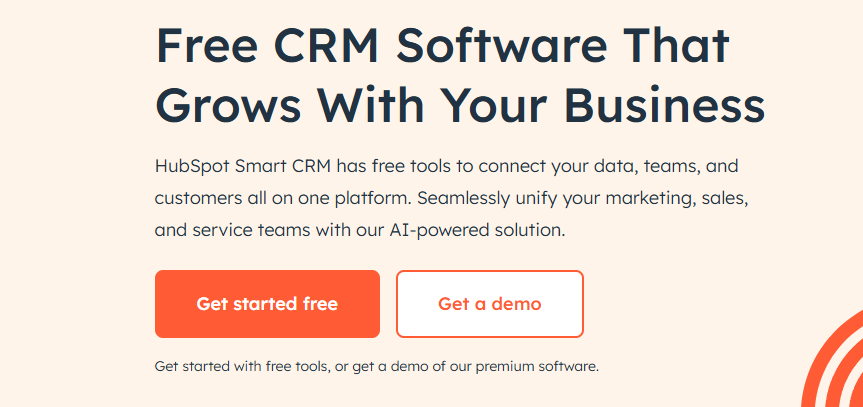
What It Is:
HubSpot CRM is a free, scalable platform that allows startups to manage contacts, track deals, automate communication, and streamline marketing — all without needing a large sales team or technical setup.
Why Startups Need It in 2025:
Customer relationships are the lifeblood of any startup, especially in the early stages. HubSpot CRM gives you a complete view of every lead and customer interaction, helping you nurture relationships, automate follow-ups, and ultimately close more deals — all from a single dashboard. And the best part? Many of its core features are free, making it perfect for budget-conscious startups.
Key Features:
-
Contact & Deal Management: Store and manage an unlimited number of contacts and track deal stages through an intuitive sales pipeline.
-
Email Templates & Tracking: See when leads open your emails and engage, allowing you to follow up at the right time.
-
Live Chat & Chatbots: Engage visitors directly on your site, even when you’re offline.
-
Marketing Automation: Send follow-up emails, segment lists, and trigger actions based on user behaviour.
-
Sales & Performance Analytics: Monitor deal progress, team productivity, and campaign success in real time.
Real-World Use:
A startup selling B2B software can use HubSpot to capture leads from their website, automatically assign them to a sales rep, track conversations, and follow up with personalised email sequences — all without touching a single spreadsheet.
4. Canva — DIY Graphic Design for Professional-Looking Marketing
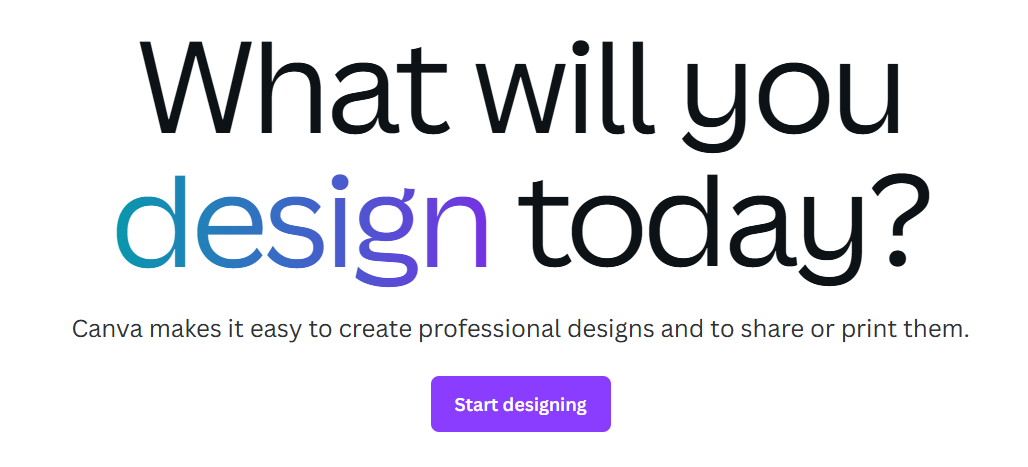
What It Is:
Canva is a graphic design platform that allows anyone to create high-quality visuals — from social media graphics to pitch decks — using simple drag-and-drop tools and thousands of ready-made templates.
Why Startups Need It in 2025:
In the digital-first world of 2025, startups must communicate visually. Canva empowers non-designers to create polished graphics that maintain brand consistency without the need for a full-time designer or expensive software. Whether you’re designing content for Instagram, your website, or investor slides, Canva makes the process fast, easy, and effective.
Key Features:
-
Pre-built Templates: Create social posts, infographics, flyers, presentations, and more — all branded to your style.
-
Brand Kit: Store your logo, fonts, and colours for consistent branding.
-
Collaboration Tools: Share designs with your team, leave comments, and work together in real time.
-
Export Options: Download in multiple formats, including PDF, MP4, and transparent PNG.
-
Free Image & Icon Library: Access thousands of stock images and illustrations for no extra cost.
Real-World Use:
A startup launching a new product can quickly design a full campaign — teaser posts, promotional banners, email graphics, and a launch presentation — all within Canva and without hiring a designer.
5. QuickBooks Online — Smart Accounting for Startup Finances
What It Is:
QuickBooks Online is one of the most trusted cloud-based accounting platforms, designed to help small businesses manage their finances with ease — from invoicing and expense tracking to reporting and tax prep.
Why Startups Need It in 2025:
Managing cash flow is crucial for startups, and QuickBooks Online offers a simple yet powerful way to stay on top of your numbers. It automates much of the financial admin that would otherwise slow you down and ensures your financial data is always up-to-date and accessible. Whether you’re bootstrapping or gearing up for investment, having clean, accurate financials is non-negotiable.
Key Features:
-
Automated Invoicing: Create, send, and schedule recurring invoices with ease.
-
Expense Tracking: Link bank accounts and credit cards to automatically track transactions.
-
Custom Reports & Dashboards: Get insights on profit & loss, cash flow, and more.
-
VAT & Tax Tools: Calculate and file taxes correctly, especially helpful during self-assessment or end-of-year reporting.
-
Mobile Access: Manage your finances on the go with their app.
Real-World Use:
A startup selling physical products can use QuickBooks to track inventory, generate accurate sales reports, manage supplier payments, and ensure all tax obligations are handled on time — saving hours of manual spreadsheet work.
6. Trello — Visual Project Management That Grows with You
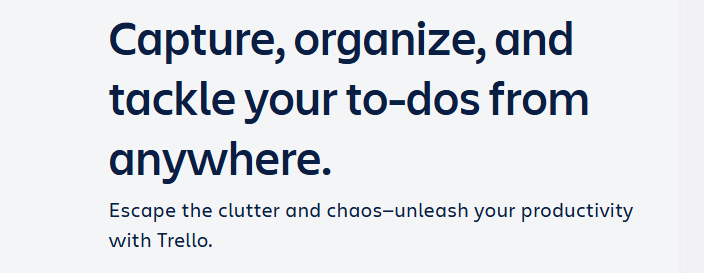
What It Is:
Trello is a flexible project and task management tool that uses boards, lists, and cards to help teams visually organise their work and move tasks from “To Do” to “Done.”
Why Startups Need It in 2025:
Trello offers a lightweight but powerful solution for tracking ideas, launching campaigns, and managing day-to-day work. It’s especially valuable for smaller startup teams that need a visual overview of what’s happening without the learning curve of more complex tools. Whether you’re planning a product roadmap or coordinating blog content, Trello keeps everything organised and collaborative.
Key Features:
-
Kanban Boards: Visually track project stages and task progress.
-
Custom Labels & Due Dates: Prioritise and stay on top of important deadlines.
-
Power-Ups (Integrations): Enhance Trello with tools like Slack, Google Drive, and Calendly.
-
Checklists and Attachments: Break down tasks and store relevant files directly on the card.
-
Team Collaboration: Assign cards to teammates, comment, and track updates all in one place.
Real-World Use:
A digital marketing startup might use Trello to plan campaigns, assign roles to team members, track design and content deadlines, and keep everything moving with a clear, colour-coded board.
7. Zoom — Virtual Communication That Connects and Scales
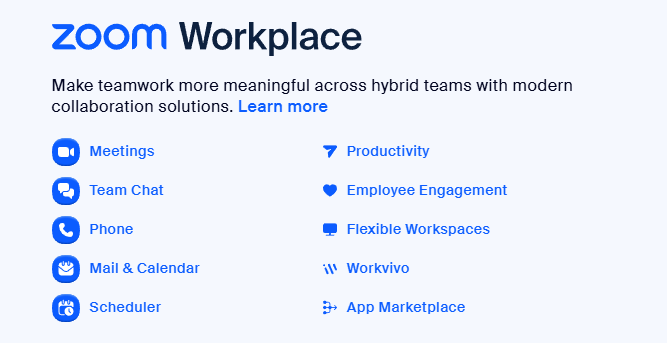
What It Is:
Zoom is a widely-used video conferencing platform that supports virtual meetings, webinars, team check-ins, and more — all with crystal-clear video and audio quality.
Why Startups Need It in 2025:
Startups often work with distributed teams, remote freelancers, global clients, and investors — making reliable virtual communication essential. Zoom provides a stable and scalable platform for everything from quick internal check-ins to investor presentations and customer demos. With virtual collaboration now a normal part of startup culture, Zoom has become a critical tool for maintaining strong connections and professionalism at every level.
Key Features:
-
HD Video & Audio: Seamless meetings and presentations with screen sharing.
-
Webinars & Events: Host virtual events with registration, Q&A, and analytics.
-
Breakout Rooms: Split into smaller groups for training, brainstorming, or team sessions.
-
Recording & Transcripts: Keep a record of calls and meetings to revisit or share later.
-
Third-Party Integrations: Sync with tools like Calendly, Slack, and Google Workspace.
Real-World Use:
A startup pitching to investors across time zones can use Zoom to schedule polished video calls, share pitch decks, and record the session for internal review — all without the costs of travel or physical meetings.
8. Mailchimp — All-in-One Email Marketing for Startups

What It Is:
Mailchimp is an email marketing and automation platform designed to help businesses grow their audience, engage leads, and drive conversions through beautifully crafted and data-driven email campaigns.
Why Startups Need It in 2025:
Email remains one of the most cost-effective marketing channels, and Mailchimp offers startups an affordable, intuitive way to manage their subscriber lists, segment audiences, send campaigns, and analyse results. Its free plan is generous, and as you scale, Mailchimp’s automation and personalisation features grow with you — helping you stay connected with customers and leads in a meaningful, measurable way.
Key Features:
-
Email Campaign Builder: Drag-and-drop templates for easy email creation.
-
Audience Segmentation: Target subscribers based on behaviour, preferences, or past interactions.
-
Automation: Set up welcome series, abandoned cart emails, and more.
-
A/B Testing: Experiment with subject lines, layouts, and CTAs to boost results.
-
Analytics Dashboard: Track open rates, clicks, and conversions in real time.
Real-World Use:
A startup launching a new service can use Mailchimp to build hype through pre-launch emails, segment users by interest, and nurture them with targeted follow-ups — all automatically, without needing a full marketing team.
9. Notion — The All-in-One Workspace for Knowledge, Tasks, and Collaboration
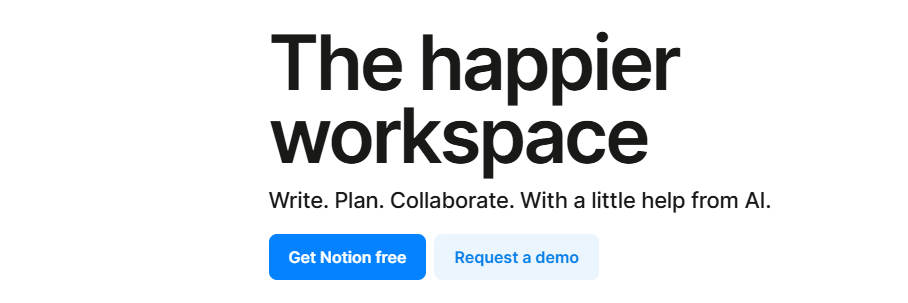
What It Is:
Notion is a flexible all-in-one workspace where you can take notes, manage tasks, create databases, plan content, and collaborate with your team — all in one beautifully designed interface.
Why Startups Need It in 2025:
Startups move fast, and having scattered documents, meeting notes, and task lists slows everyone down. Notion consolidates all your company knowledge — SOPs, wikis, roadmaps, meeting notes, content calendars — into a single shared space. It reduces reliance on multiple tools and makes collaboration clearer, faster, and more organised.
Key Features:
-
Customisable Pages & Templates: Build tailored workspaces for anything from HR policies to pitch decks.
-
Linked Databases: Create dynamic systems like editorial calendars or CRM-style client tracking.
-
Real-Time Collaboration: Multiple users can edit and comment on documents simultaneously.
-
Embeds & Integrations: Pull in Google Docs, Figma files, Loom videos, and more.
-
Drag-and-Drop Simplicity: Move blocks of content around without needing design skills.
Real-World Use:
A startup can use Notion to centralise its entire business — from onboarding documents and vision boards to content pipelines and team OKRs — allowing everyone to stay aligned and productive, even as the company grows.
10. ChartBlocks — Turn Raw Data into Beautiful, Shareable Charts

What It Is:
ChartBlocks is an easy-to-use online tool that allows you to create stunning, customisable charts and graphs from spreadsheets or imported data — no coding or graphic design needed.
Why Startups Need It in 2025:
Data storytelling is more important than ever. Whether pitching to investors, building a case study, or creating marketing reports, startups need to present numbers clearly and convincingly. ChartBlocks helps transform raw figures into sleek, branded charts that are ready for reports, social media, or presentations. It’s especially useful for startups without an in-house designer.
Key Features:
-
Customisable Chart Builder: Create bar, pie, line, and other charts with full control over colours, fonts, and labels.
-
Spreadsheet & API Integration: Import data directly or connect with live data sources.
-
Responsive & Shareable: Charts are mobile-friendly and can be embedded or exported in various formats.
-
No Design Skills Needed: Anyone on the team can build professional visuals in minutes.
-
Team Collaboration: Share charts with collaborators or clients for feedback.
Real-World Use:
A startup preparing for a pitch deck can use ChartBlocks to quickly visualise growth metrics, survey results, or user data — presenting them in a clean, digestible format that makes their story more compelling.
Final Thoughts
Startups in 2025 need more than hustle — they need the right software stack to move fast, stay lean, and scale with confidence. Whether you’re managing projects, communicating with your team, handling customer relationships, or presenting data to stakeholders, the tools above can help you do more with less.
By investing time in the right free or low-cost software, you not only boost efficiency but also set a strong foundation for sustainable growth.


